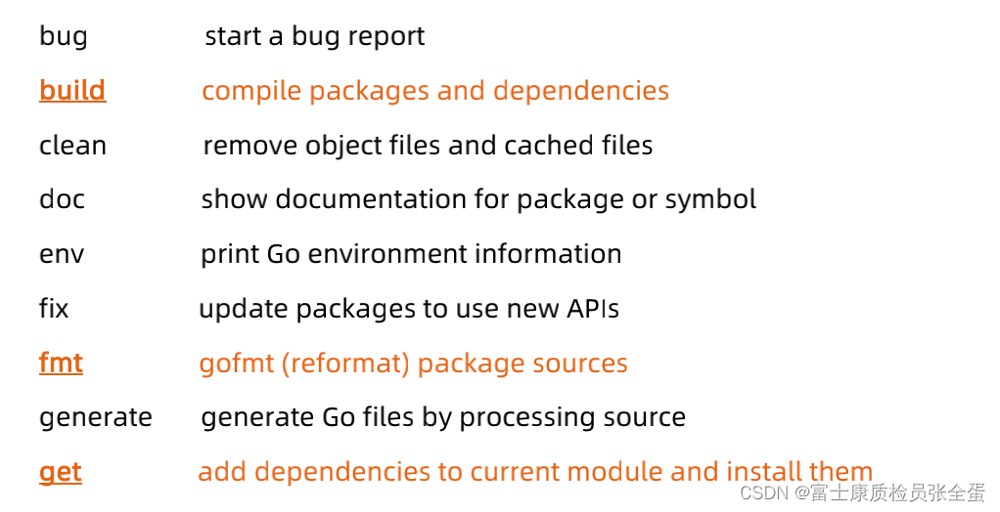简介
Go 标准库提供 Cond 原语的目的是,为等待 / 通知场景下的并发问题提供支持。Cond 通常应用于等待某个条件的一组 goroutine,等条件变为 true 的时候,其中一个 goroutine 或者所有的 goroutine 都会被唤醒执行。
Cond 是和某个条件相关,这个条件需要一组 goroutine 协作共同完成,在条件还没有满足的时候,所有等待这个条件的 goroutine 都会被阻塞住,只有这一组 goroutine 通过协作达到了这个条件,等待的 goroutine 才可能继续进行下去。
这个条件可以是我们自定义的 true/false 逻辑表达式。
但是 Cond 使用的比较少,因为在大部分场景下是可以被 Channel 和 WaitGroup 来替换的。
详细介绍
下面就是 Cond 的数据结构和对外提供的方法,Cond 内部维护了一个等待队列和锁实例。
|
1 2 3 4 5 6 7 8 9 10 11 12 13 14 15 |
type Cond struct { noCopy noCopy
// 锁 L Locker
// 等待队列 notify notifyList checker copyChecker }
func NeWCond(l Locker) *Cond func (c *Cond) Broadcast() func (c *Cond) Signal() func (c *Cond) Wait() |
-
NeWCond: NeWCond 方法需要调用者传入一个 Locker 接口,这个接口就 Lock/UnLock 方法,所以我们可以传入一个 sync.Metex 对象
-
Signal:允许调用者唤醒一个等待当前 Cond 的 goroutine。如果 Cond 等待队列中有一个或者多个等待的 goroutine ,则从等待队列中移除第一个 goroutine 并把它唤醒
-
Broadcast:允许调用者唤醒所有等待当前 Cond 的 goroutine。如果 Cond 等待队列中有一个或者多个等待的 goroutine,则清空所有等待的 goroutine,并全部唤醒
-
Wait:会把调用者放入 Cond 的等待队列中并阻塞,直到被 Signal 或者 Broadcast 的方法从等待队列中移除并唤醒
案例:Redis连接池
可以看一下下面的代码,使用了 Cond 实现一个 Redis 的连接池,最关键的代码就是在链表为空的时候需要调用 Cond 的 Wait 方法,将 gorutine 进行阻塞。然后 goruntine 在使用完连接后,将连接返回池子后,需要通知其他阻塞的 goruntine 来获取连接。
|
1 2 3 4 5 6 7 8 9 10 11 12 13 14 15 16 17 18 19 20 21 22 23 24 25 26 27 28 29 30 31 32 33 34 35 36 37 38 39 40 41 42 43 44 45 46 47 48 49 50 51 52 53 54 55 56 57 58 59 60 61 62 63 64 65 66 67 68 69 70 71 72 73 74 75 76 77 78 79 80 81 82 83 84 85 86 87 88 89 90 91 92 93 94 95 96 97 98 99 100 101 102 103 104 105 106 107 108 109 110 111 112 113 114 115 116 117 118 119 120 121 122 123 124 125 126 127 128 |
package main
import ( "container/list" "fmt" "math/rand" "sync" "time" )
// 连接池 type Pool struct { lock sync.Mutex // 锁 clients list.List // 连接 cond *sync.Cond // cond实例 close bool // 是否关闭 }
// Redis Client type Client struct { id int32 }
// 创建Redis Client func NewClient() *Client { return &Client{ id: rand.Int31n(100000), } }
// 关闭Redis Client func (this *Client) Close() { fmt.Printf("Client:%d 正在关闭", this.id) }
// 创建连接池 func NewPool(maxConnNum int) *Pool { pool := new(Pool) pool.cond = sync.NewCond(&pool.lock)
// 创建连接 for i := 0; i < maxConnNum; i++ { client := NewClient() pool.clients.PushBack(client) }
return pool }
// 从池子中获取连接 func (this *Pool) Pull() *Client { this.lock.Lock() defer this.lock.Unlock()
// 已关闭 if this.close { fmt.Println("Pool is closed") return nil }
// 如果连接池没有连接 需要阻塞 for this.clients.Len() <= 0 { this.cond.Wait() }
// 从链表中取出头节点,删除并返回 ele := this.clients.Remove(this.clients.Front()) return ele.(*Client) }
// 将连接放回池子 func (this *Pool) Push(client *Client) { this.lock.Lock() defer this.lock.Unlock()
if this.close { fmt.Println("Pool is closed") return }
// 向链表尾部插入一个连接 this.clients.PushBack(client)
// 唤醒一个正在等待的goruntine this.cond.Signal() }
// 关闭池子 func (this *Pool) Close() { this.lock.Lock() defer this.lock.Unlock()
// 关闭连接 for e := this.clients.Front(); e != nil; e = e.Next() { client := e.Value.(*Client) client.Close() }
// 重置数据 this.close = true this.clients.Init() }
func main() {
var wg sync.WaitGroup
pool := NewPool(3) for i := 1; i <= 10; i++ { wg.Add(1) go func(index int) {
defer wg.Done()
// 获取一个连接 client := pool.Pull()
fmt.Printf("Time:%s | 【goruntine#%d】获取到client[%d]\n", time.Now().Format("15:04:05"), index, client.id) time.Sleep(time.Second * 5) fmt.Printf("Time:%s | 【goruntine#%d】使用完毕,将client[%d]放回池子\n", time.Now().Format("15:04:05"), index, client.id)
// 将连接放回池子 pool.Push(client) }(i) }
wg.Wait() } |
运行结果:
Time:15:10:25 | 【goruntine#7】获取到client[31847]
Time:15:10:25 | 【goruntine#5】获取到client[27887]
Time:15:10:25 | 【goruntine#10】获取到client[98081]
Time:15:10:30 | 【goruntine#5】使用完毕,将client[27887]放回池子
Time:15:10:30 | 【goruntine#6】获取到client[27887]
Time:15:10:30 | 【goruntine#10】使用完毕,将client[98081]放回池子
Time:15:10:30 | 【goruntine#7】使用完毕,将client[31847]放回池子
Time:15:10:30 | 【goruntine#1】获取到client[31847]
Time:15:10:30 | 【goruntine#9】获取到client[98081]
Time:15:10:35 | 【goruntine#6】使用完毕,将client[27887]放回池子
Time:15:10:35 | 【goruntine#3】获取到client[27887]
Time:15:10:35 | 【goruntine#1】使用完毕,将client[31847]放回池子
Time:15:10:35 | 【goruntine#4】获取到client[31847]
Time:15:10:35 | 【goruntine#9】使用完毕,将client[98081]放回池子
Time:15:10:35 | 【goruntine#2】获取到client[98081]
Time:15:10:40 | 【goruntine#3】使用完毕,将client[27887]放回池子
Time:15:10:40 | 【goruntine#8】获取到client[27887]
Time:15:10:40 | 【goruntine#2】使用完毕,将client[98081]放回池子
Time:15:10:40 | 【goruntine#4】使用完毕,将client[31847]放回池子
Time:15:10:45 | 【goruntine#8】使用完毕,将client[27887]放回池子
注意点
- 在调用 Wait 方法前,需要先加锁,就像我上面例子中 Pull 方法也是先加锁
看一下源码就知道了,因为 Wait 方法的执行逻辑是先将 goruntine 添加到等待队列中,然后释放锁,然后阻塞,等唤醒后,会继续加锁。如果在调用 Wait 前不加锁,但是里面会解锁,执行的时候就会报错。
|
1 2 3 4 5 6 7 8 9 10 11 12 13 14 15 16 17 18 19 |
// // c.L.Lock() // for !condition() { // c.Wait() // } // ... make use of condition ... // c.L.Unlock() // func (c *Cond) Wait() { c.checker.check()
// 添加到等待队列 t := runtime_notifyListAdd(&c.notify) c.L.Unlock()
// 阻塞 runtime_notifyListWait(&c.notify, t) c.L.Lock() } |
- 还是 Wait 方法,在唤醒后需要继续检查 Cond 条件
就拿上面的 redis 连接案例来进行说明吧,我这里是使用了 for 循环来进行检测。如果将 for 循环改成使用 if,也就是只判断一次,会有什么问题?可以停下来先想想
上面说了调用者也可以使用 Broadcast 方法来唤醒 goruntine ,如果使用的是 Broadcast 方法,所有的 goruntine 都会被唤醒,然后大家都去链表中去获取 redis 连接了,就会出现部分 goruntine拿不到连接,
实际上没有那么多连接可以获取,因为每次只会放回一个连接到池子中。
|
1 2 3 4 5 6 7 8 |
// 如果连接池没有连接 需要阻塞 for this.clients.Len() <= 0 { this.cond.Wait() }
// 获取连接 ele := this.clients.Remove(this.clients.Front()) return ele.(*Client) |

